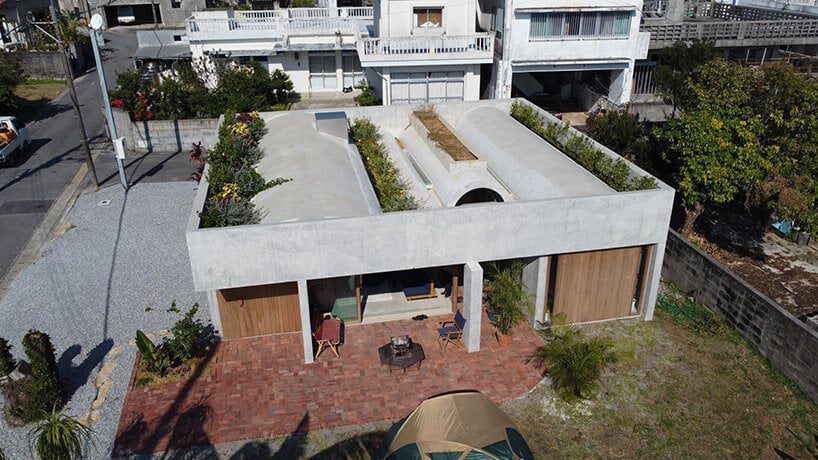a harmonious blend of architecture and agriculture
The House in Shikenbaru, designed by Studio Cochi Architects, is a residential structure located in the village of Nanjo, Japan. Situated near the sea in southern Okinawa, this concrete house serves as a home for a couple and their four children. It is not merely a dwelling but also a space that seamlessly integrates with the local farming activities and the natural environment of Okinawa. The architecture of the house takes into account the region’s unique characteristics, such as its temperate climate and abundant agricultural opportunities. This essay explores the innovative design and features of the House in Shikenbaru, highlighting its harmonious integration of farm work, spatial layout, and environmental considerations.
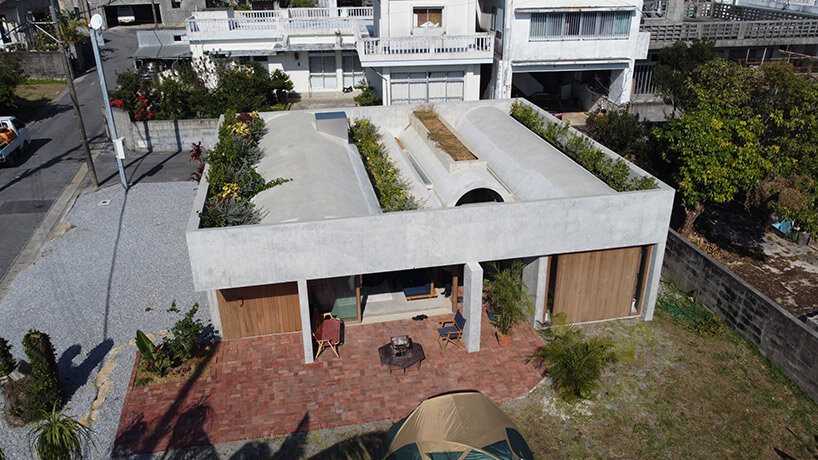 images © Ooki Jingu | @ookijingu
images © Ooki Jingu | @ookijingu
Sustainable Farming and Local Context
The owner of the Studio Cochi Architects-designed ‘House in Shikenbaru’ is a farmer, cultivating a variety of vegetables including okra, green beans, and papaya. With a focus on sustainability, the architects consider the owner’s farming activities and aim to provide a conducive environment for his work. The site’s location near fields and the absence of snow or frost in Okinawa enables year-round vegetable cultivation, which influenced the architectural decisions. The house becomes a vital element in supporting the owner’s farming endeavors, allowing for efficient operations and seamless transitions between indoor and outdoor work areas.
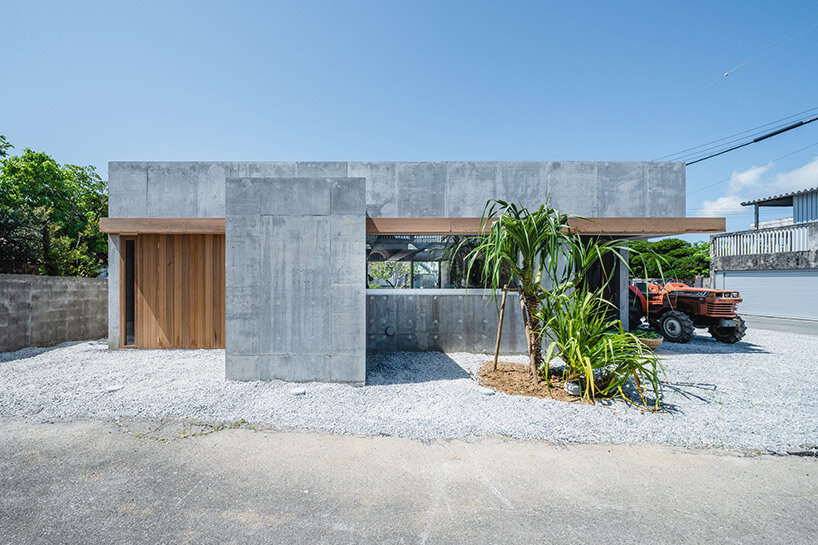
Spatial Considerations and Layout
To create a functional and adaptable living space, the layout and volume of the House in Shikenbaru were carefully planned, taking into account the surrounding environment and prevailing wind direction. Given the spacious site, the decision was made to construct a single-story house. The removal of the original block wall facilitated easy access for tractors and cultivators from any direction, creating a versatile environment conducive to agricultural activities. Additionally, a vacant lot was designated around the building, providing storage space for farming tools and ensuring a smooth workflow that integrates both indoor and outdoor tasks.
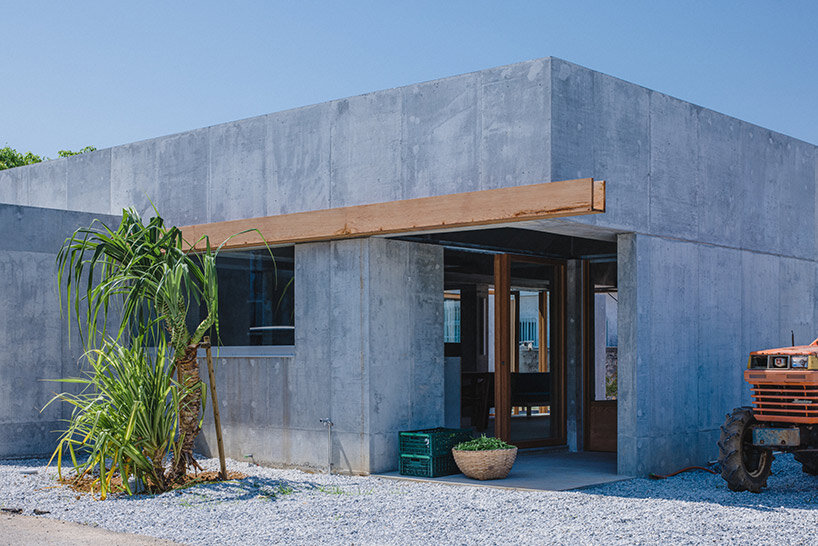 deep overhangs shelter semi-outdoor spaces
deep overhangs shelter semi-outdoor spaces
Seamless Integration of Interior and Exterior
The architectural design of the House in Shikenbaru employs a simplistic yet elegant approach to seamlessly blend the interior and exterior spaces. A continuous vaulted ceiling, varying in height, unifies the indoor and outdoor areas. Stretching from north to south, this vault crosses the boundaries between the interior and the garden, forming a semi-outdoor intermediate space.
With deep eaves, this area serves as a hall for daytime farming activities and fosters a connection between the occupants and the surrounding natural environment. The rhythm of the continuous east-west vaulted ceiling creates a sense of visual harmony within the simple plan, while the interplay of natural light through the roof and wall gaps produces a subtle and captivating gradation of light and shadow.
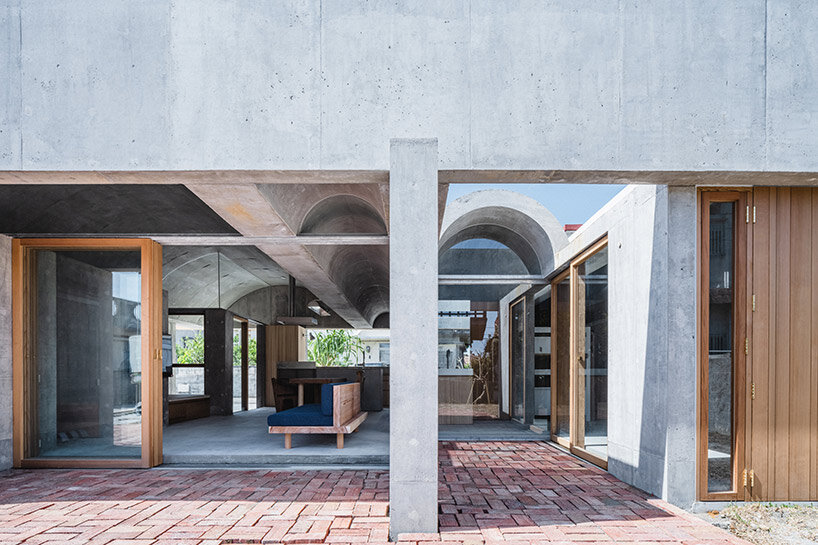
the interiors and exteriors are united by a continuous vaulted ceiling of varying heights
Environmental Adaptations
The House in Shikenbaru effectively adapts to the demanding Okinawan climate through innovative architectural choices. The valley at the top of the vaulted ceiling is filled with soil, providing insulation against the intense sunlight. This strategic design element helps regulate the indoor temperature, ensuring comfort for the residents and protecting delicate crops.
Furthermore, the entire surface of the vaulted roof is covered with vibrant ivy plants, such as passion fruit and bougainvillea. This living roof not only enhances the aesthetic appeal of the house but also contributes to environmental sustainability and acts as a testament to the owner’s commitment to cultivating fruits and vegetables in diverse soil depths.
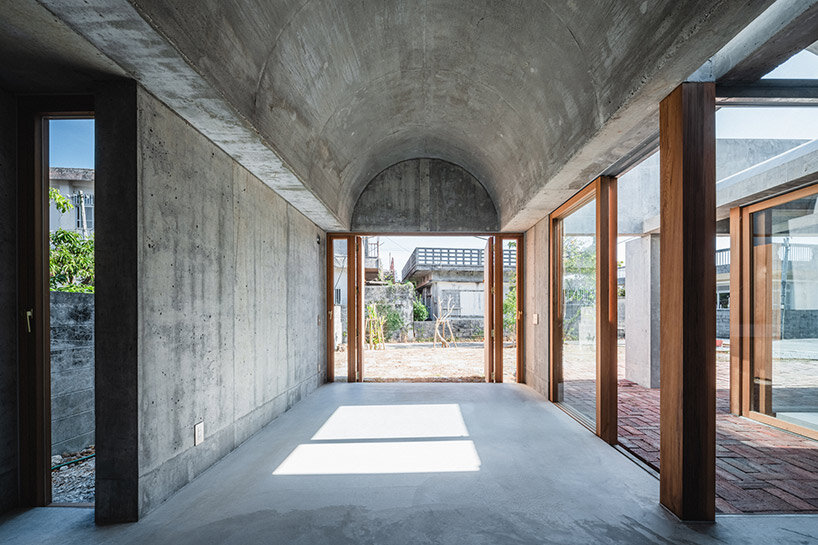 the house opens up with seamless, gradual transitions between the interiors and exteriors
the house opens up with seamless, gradual transitions between the interiors and exteriors
The House in Shikenbaru exemplifies the successful integration of architecture, farming, and the natural environment in southern Okinawa. Studio Cochi Architects have skillfully crafted a residence that caters to the needs of a farming family while honoring the local context and sustainable practices. Through the layout, seamless blending of spaces, and environmental adaptations, the house creates a harmonious environment that embraces the rhythm of farm work and facilitates a deep connection with the surrounding landscape. The House in Shikenbaru stands as a testament to the power of architecture to enrich lives, promote sustainable practices, and create spaces that resonate with their inhabitants.

